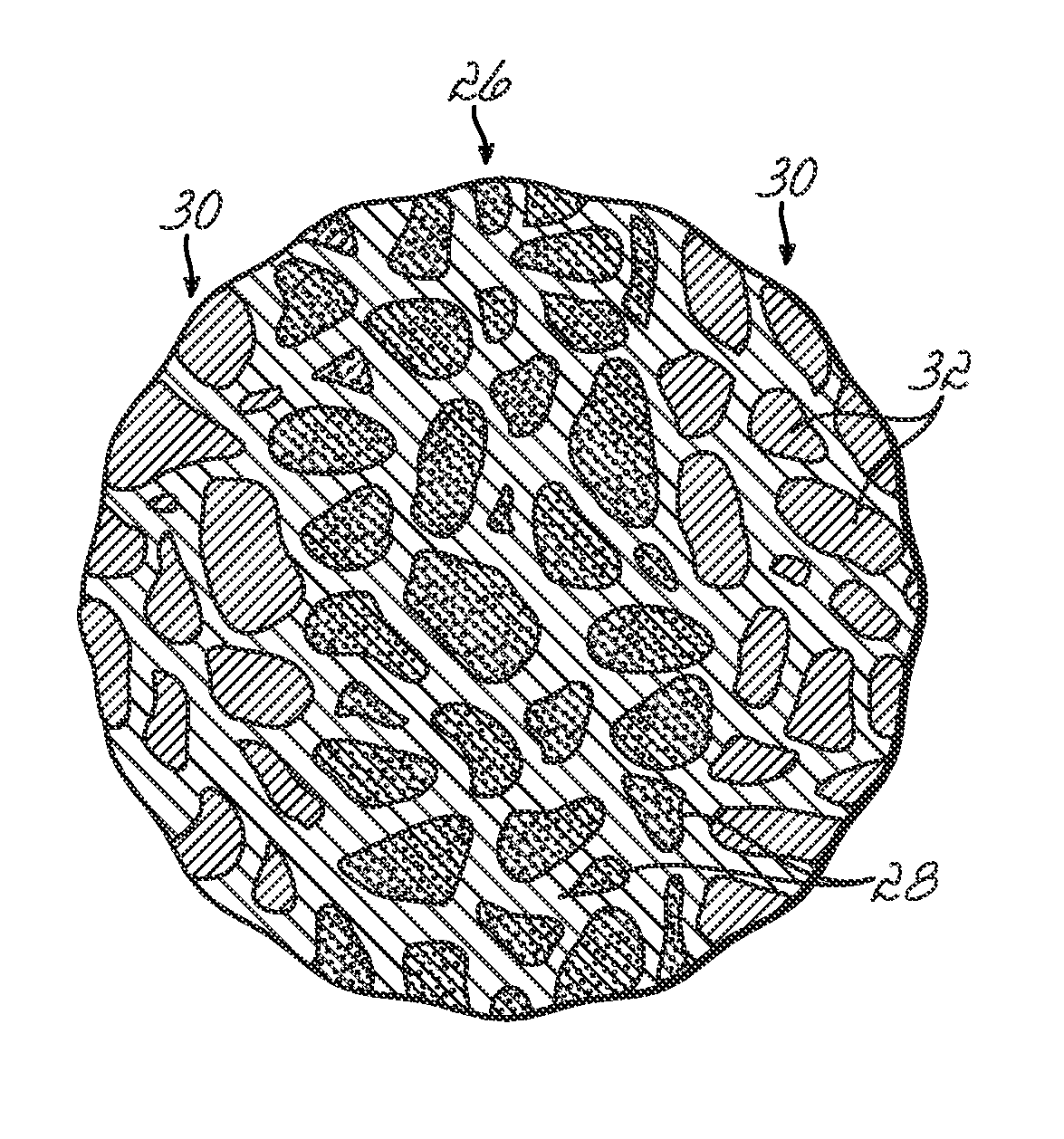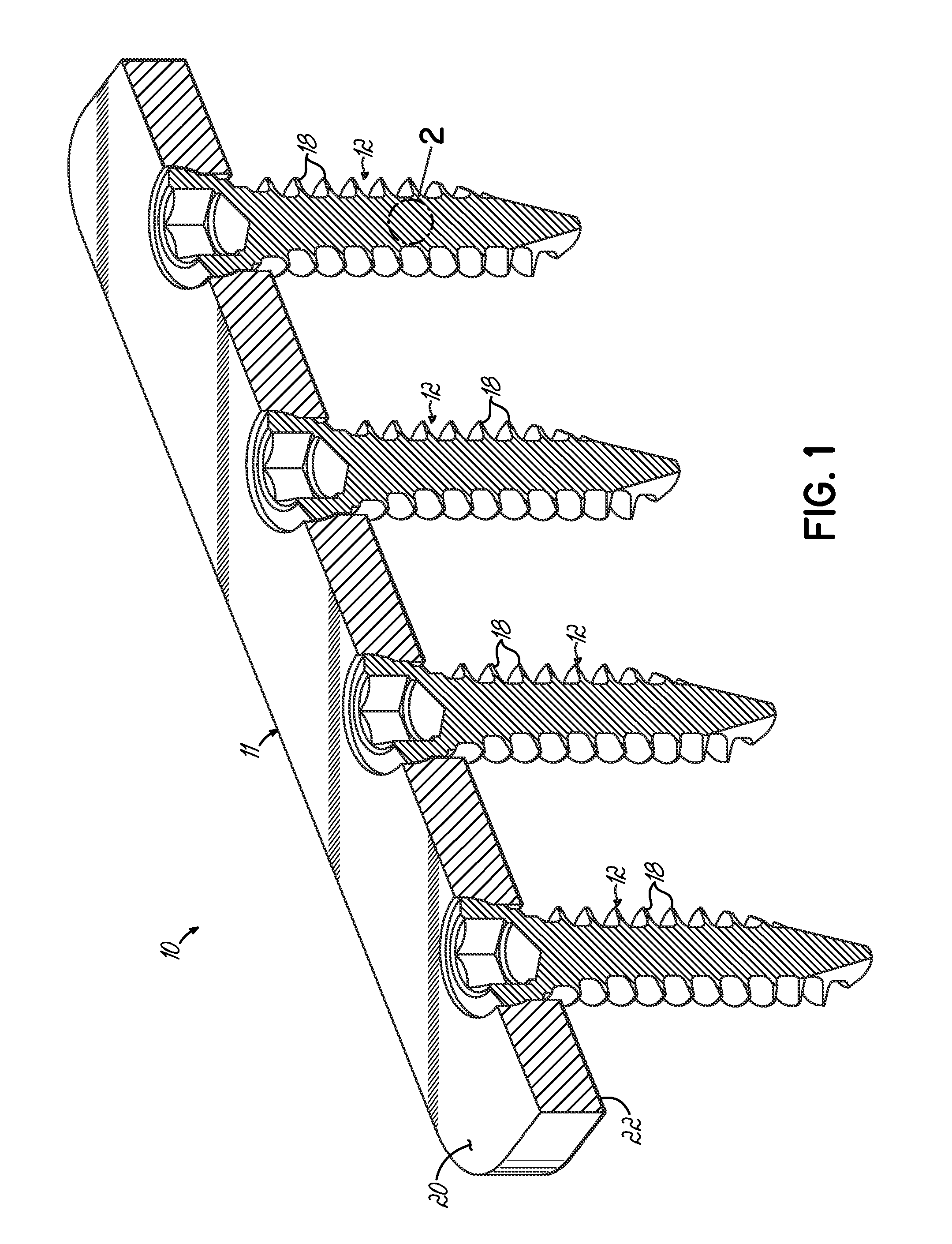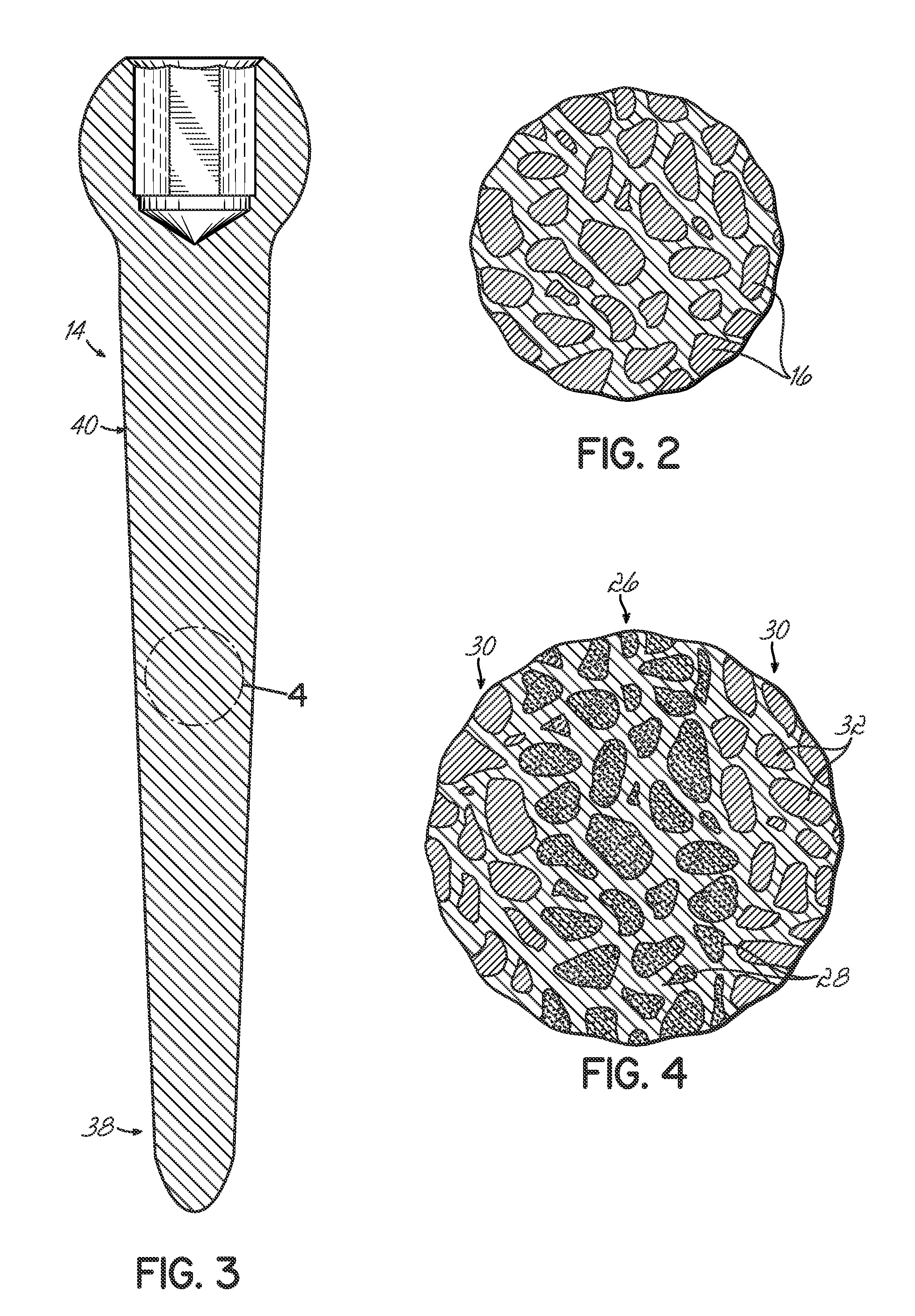Medical implant formed from porous metal and method
a technology of porous metal and medical implants, applied in the field of medical implants, can solve the problems of easy bending or distorted porous metal, shear a screw in half, and general nature of porous metal, and achieve the effect of strengthening the implant and being easy to process
- Summary
- Abstract
- Description
- Claims
- Application Information
AI Technical Summary
Benefits of technology
Problems solved by technology
Method used
Image
Examples
Embodiment Construction
[0014]According to the present invention, a medical implant such as a spinal implant or an orthopedic implant is formed at least in part from a porous metal member wherein the pores of the porous metal member are filled with a hardening material, which facilitates fabrication and / or implantation of the medical implant.
[0015]For use in the present invention, any biologically acceptable porous metal can be used. These can be formed from tantalum, titanium, zirconium, cobalt, chrome and stainless steel, as well as alloys of these. Preferably the pores of the porous metal will have a pore size of about 150 microns to about 500 microns, or more, depending upon the particular application. However, in certain applications a smaller pore size may be preferred.
[0016]One preferred porous metal is Trabecular Metal™ material, which is a porous tantalum material marketed by Zimmer Spine, Inc., of Edina, Minn. This material is also described in several U.S. patents, including, for example, U.S. P...
PUM
| Property | Measurement | Unit |
|---|---|---|
| pore size | aaaaa | aaaaa |
| resorbable | aaaaa | aaaaa |
| rates of resorption | aaaaa | aaaaa |
Abstract
Description
Claims
Application Information
 Login to View More
Login to View More - R&D
- Intellectual Property
- Life Sciences
- Materials
- Tech Scout
- Unparalleled Data Quality
- Higher Quality Content
- 60% Fewer Hallucinations
Browse by: Latest US Patents, China's latest patents, Technical Efficacy Thesaurus, Application Domain, Technology Topic, Popular Technical Reports.
© 2025 PatSnap. All rights reserved.Legal|Privacy policy|Modern Slavery Act Transparency Statement|Sitemap|About US| Contact US: help@patsnap.com



